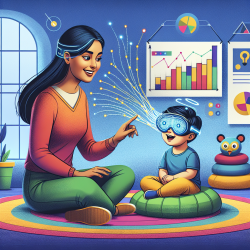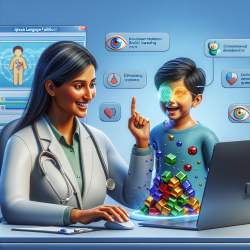Introduction to Pupillometry in Speech Therapy
In the realm of speech therapy, especially for children, understanding cognitive processes and their physiological markers is crucial. One such physiological marker that has gained attention is the pupil's response, known as pupillometry. Recent advancements in pupillometry, as discussed in the research article "From pre-processing to advanced dynamic modeling of pupil data," offer promising insights that can be leveraged to enhance speech therapy outcomes for children.
Understanding Pupillometry
Pupillometry involves measuring the pupil's size and its changes in response to various stimuli. The pupil's size can indicate different cognitive states, such as arousal and attention, which are essential in understanding a child's engagement and cognitive load during speech therapy sessions. The neural underpinnings of pupillometry suggest that pupil size is closely linked with the noradrenergic system, which is responsible for cognitive arousal.
Pre-processing and Analyzing Pupil Data
Before diving into the application of pupillometry in speech therapy, it's essential to understand the pre-processing steps involved in analyzing pupil data. The research outlines several pre-processing techniques, such as interpolation of missing data, filtering, and normalization, which ensure that the pupil data is accurate and reliable for analysis. These steps are crucial for making informed decisions based on the data collected during therapy sessions.
Advanced Signal-to-Signal Analysis Techniques
The research highlights advanced signal-to-signal analysis techniques, such as dynamic time-warping and cross-recurrence quantification analysis, which can be used to relate changes in pupil size to specific stimuli or therapy activities. These techniques allow therapists to understand how a child's pupil response correlates with their engagement and cognitive processing during speech therapy.
Implementing Pupillometry in Speech Therapy
By integrating pupillometry into speech therapy, practitioners can gain valuable insights into a child's cognitive state and tailor therapy sessions to maximize engagement and learning. For instance, by monitoring pupil size, therapists can identify moments of high cognitive load and adjust the difficulty or pace of activities accordingly. This data-driven approach ensures that therapy is both effective and personalized to each child's needs.
Encouraging Further Research
While the current research provides a solid foundation for using pupillometry in speech therapy, there is ample room for further exploration. Practitioners are encouraged to conduct additional studies to refine the application of pupillometry and explore its potential in other areas of child development and therapy.
To read the original research paper, please follow this link: From pre-processing to advanced dynamic modeling of pupil data.










